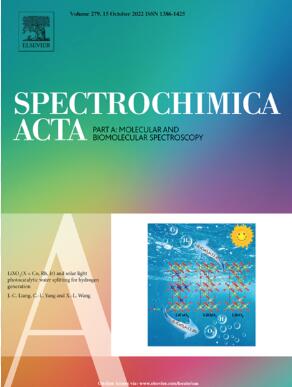Deep learning-assisted Raman spectroscopy for automated identification of specific minerals
IF 4.3
2区 化学
Q1 SPECTROSCOPY
Spectrochimica Acta Part A: Molecular and Biomolecular Spectroscopy
Pub Date : 2025-02-01
DOI:10.1016/j.saa.2025.125843
引用次数: 0
Abstract
Raman spectroscopy is applied as an important method for material identification in field geology. However, analyzing the collected Raman spectroscopy results is time-consuming and labor-intensive, which arises a demand for labeling and sorting a large volume of in-situ Raman measurements automatically. In this study, we consider the spectral characteristics of mineral to develop a convolutional attention network for rapid and precise identification of mineral component. Moreover, we introduce Gradient-weight Class Activation Mapping Plus Plus(Grad-Cam++) to visualize the important region for predicting. Compared to pure Convolutional Neural Networks (CNN), our model is better at learning the details in characteristic peaks to distinguish minerals with similar Raman spectra. Overall, this study exhibits significance for automated process of labeling data collected by Raman instruments in field work and developing similar spectral recognition algorithms.
Plain language summary
A deep-learning based model is proposed to identify specific mineral compoents from Raman spectra. The novel method accumulate experience from a vast amount of known data and perform rapid inference on unknown data as educated researchers. Futhermore, we show a technology named Grad-Cam++ to understand the reason of model’s decisions in complex situations. It benefits researchers to build trust in intelligent systems and make continuous improvement on deep-learning based model. This study will provide reference and support for the development of artificial intelligence algorithms for observational instruments in field work.

求助全文
约1分钟内获得全文
求助全文
来源期刊
CiteScore
8.40
自引率
11.40%
发文量
1364
审稿时长
40 days
期刊介绍:
Spectrochimica Acta, Part A: Molecular and Biomolecular Spectroscopy (SAA) is an interdisciplinary journal which spans from basic to applied aspects of optical spectroscopy in chemistry, medicine, biology, and materials science.
The journal publishes original scientific papers that feature high-quality spectroscopic data and analysis. From the broad range of optical spectroscopies, the emphasis is on electronic, vibrational or rotational spectra of molecules, rather than on spectroscopy based on magnetic moments.
Criteria for publication in SAA are novelty, uniqueness, and outstanding quality. Routine applications of spectroscopic techniques and computational methods are not appropriate.
Topics of particular interest of Spectrochimica Acta Part A include, but are not limited to:
Spectroscopy and dynamics of bioanalytical, biomedical, environmental, and atmospheric sciences,
Novel experimental techniques or instrumentation for molecular spectroscopy,
Novel theoretical and computational methods,
Novel applications in photochemistry and photobiology,
Novel interpretational approaches as well as advances in data analysis based on electronic or vibrational spectroscopy.

 求助内容:
求助内容: 应助结果提醒方式:
应助结果提醒方式:


